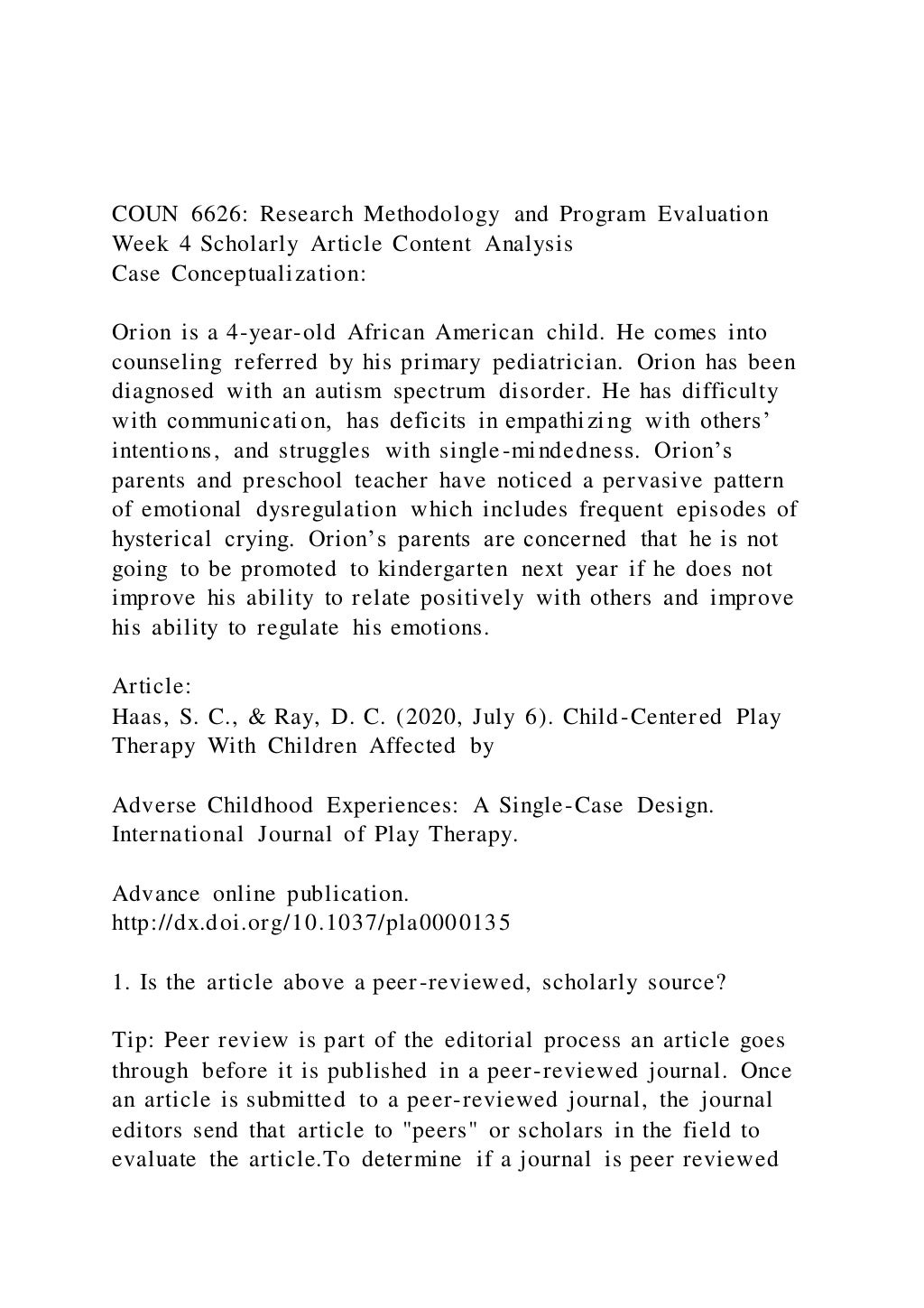COUN 6626: Research Methodology and Program Evaluation
Week 4 Scholarly Article Content Analysis
Case Conceptualization:
Orion is a 4-year-old African American child. He comes into counseling referred by his primary pediatrician. Orion has been diagnosed with an autism spectrum disorder. He has difficulty with communication, has deficits in empathizing with others’ intentions, and struggles with single-mindedness. Orion’s parents and preschool teacher have noticed a pervasive pattern of emotional dysregulation which includes frequent episodes of hysterical crying. Orion’s parents are concerned that he is not going to be promoted to kindergarten next year if he does not improve his ability to relate positively with others and improve his ability to regulate his emotions.
Article:
Haas, S. C., & Ray, D. C. (2020, July 6). Child-Centered Play Therapy With Children Affected by
Adverse Childhood Experiences: A Single-Case Design. International Journal of Play Therapy.
Advance online publication. http://dx.doi.org/10.1037/pla0000135
1. Is the article above a peer-reviewed, scholarly source?
Tip: Peer review is part of the editorial process an article goes through before it is published in a peer-reviewed journal. Once an article is submitted to a peer-reviewed journal, the journal editors send that article to "peers" or scholars in the field to evaluate the article.To determine if a journal is peer reviewed (also sometimes called refereed journals), try one or both of these steps:
· Look up the journal in the UlrichsWeb.com (available on the A-Z Database List) and determine whether it is identified as peer reviewed. Ulrich's is a directory. It is a searchable list of periodicals (magazines, journals, newspapers, etc.). It provides information about each periodical such as publisher, scope, and whether the journal uses peer review.
· Examine the journal’s website and review the submission and editorial process for evidence of peer review.
2. What is the (a) problem the researchers were investigating/purpose of the research and (b) research question the researchers were trying to answer? This is a 2 part question.
Tip: All studies have a research question that drives the investigation (what the researchers are trying to learn). Sometimes this is formally stated while other times the reader must discover this information which can usually be found in the Abstract or the Introduction section. Usually there is a section that is named “Purpose of the study”. The Results section or the Discussion section will provide the answer(s) to the research question. Research studies can use either quantitative, qualitative or mixed methods to investigate the question. Sometimes researchers are investigating more than one intervention and so research questions may include multiple parts. Be sure to review all parts of the inquiry or use multiple questions to explain.
3. Describe the sample/participants in the study. Be sure to include how many ...





